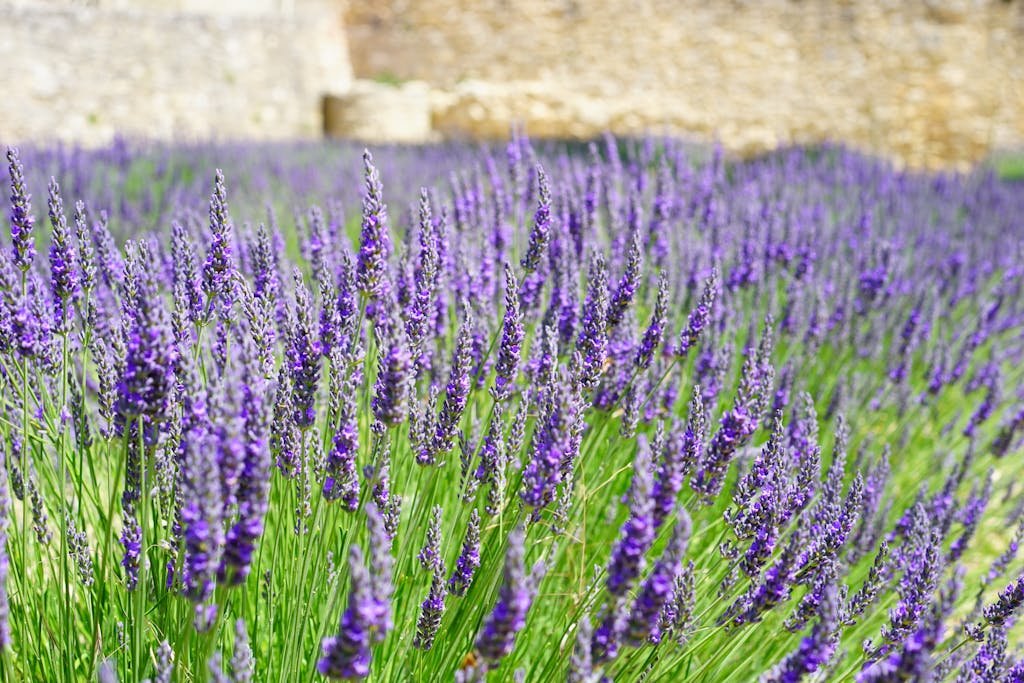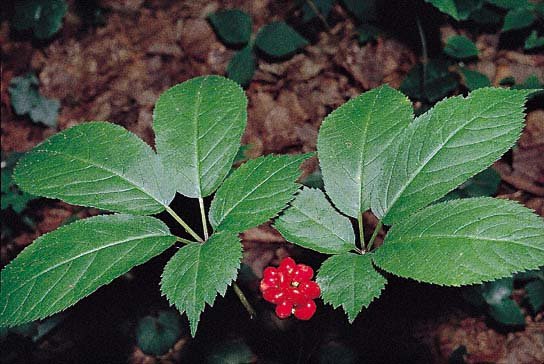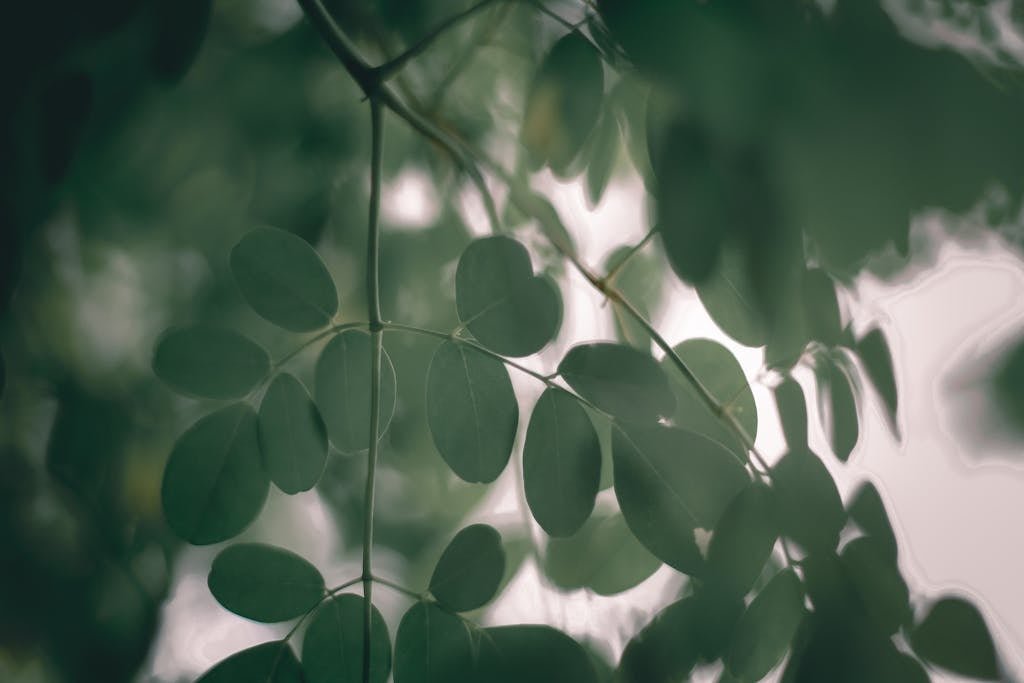Lavender – (Lavandula angustifolia)
Lavender, or Lavandula angustifolia, isn’t just a feast for the eyes with its vibrant purple hues; it’s a plant steeped in history and versatility. Known for its soothing fragrance and myriad of uses, lavender has captivated hearts and senses for centuries. From the sun-drenched fields of Provence to the gardens of home enthusiasts, it’s a symbol of tranquility and natural beauty.
Beyond its aesthetic appeal, lavender’s benefits are both vast and impressive. It’s not only a staple in the world of aromatherapy but also a powerhouse in herbal medicine, offering relief for everything from insomnia to anxiety. Whether you’re looking to enhance your garden, dive into the world of essential oils, or simply enjoy its calming scent, lavender is a plant that promises to enrich your life in countless ways.
Key Takeaways
- Versatile Plant with Historical Significance: Lavender (Lavandula angustifolia) boasts a rich history dating back to ancient civilizations and retains its appeal through its versatile uses in aromatherapy, culinary arts, pest control, and herbal medicine.
- Aesthetic and Therapeutic Benefits: Not only is lavender celebrated for its vibrant purple hues and fragrant aroma, but it also offers significant therapeutic benefits, including anxiety relief, sleep enhancement, and pain management.
- Culinary Applications: Lavender is recognized in the culinary world for its unique flavor, adding a delicate, floral note to dishes that range from savories to sweets, showcasing its flexibility in gourmet cuisine.
- Gardening Advantages: In gardening, lavender is valued for its drought tolerance, ability to attract pollinators, and natural pest repellent properties, making it a low-maintenance and beneficial addition to gardens.
- Integral Aromatherapy Component: Lavender oil is a cornerstone in aromatherapy due to its calming, soothing properties, efficacious in promoting relaxation, enhancing sleep quality, and reducing anxiety and depression symptoms.
- Herbal Medicine Efficacy: Lavender’s role in herbal medicine is underscored by research highlighting its effectiveness in anxiety reduction, pain relief, and gastrointestinal health, positioning it as a natural alternative to conventional treatments.
The History of Lavender
Lavender, scientifically known as Lavandula angustifolia, has a rich and storied past that dates back thousands of years. This herb, renowned for its captivating fragrance and myriad uses, has been celebrated throughout history for its therapeutic and aesthetic qualities.
Ancient Beginnings
Lavender’s history can be traced to the ancient civilizations of the Egyptians, Greeks, and Romans. The Egyptians utilized lavender in the mummification process, attributing to its antimicrobial properties, while the Greeks and Romans cherished the herb for its scent and purification abilities, often adding it to their baths and bedding.
- Egyptians: Used in mummification
- Greeks and Romans: Scent and purification
Medieval and Renaissance Periods
During the Middle Ages in Europe, lavender’s reputation as a holy herb flourished. It was commonly incorporated in sacred spaces to ward off evil spirits. By the Renaissance, lavender had assumed a key role in medicinal and herbal remedies, famous for alleviating skin irritations and headaches.
Culinary Uses
Interestingly, lavender also found its way into the kitchen. Its flowers and leaves have been used to flavor a variety of dishes, imparting a delicate, floral taste that’s both unique and refreshing.
Modern Cultivation and Uses
Fast forward to the present time, the cultivation and use of lavender have spread globally. It’s not just grown for its beauty in gardens but also for its essential oils. These oils are extracted and widely used in aromatherapy, cosmetics, and even in cleaning products for their antiseptic properties.
Lavender’s journey through history showcases its versatility and enduring appeal. From ancient ceremonies to modern-day aromatherapy and beyond, this herb continues to enrich our lives in numerous ways.
The Versatility of Lavender
Lavender, scientifically known as Lavandula angustifolia, is not just celebrated for its vibrant color and calming fragrance. Its utilization spans across numerous areas, making it a remarkably versatile herb. Beyond its well-known roles in perfumery and aromatherapy, lavender’s benefits extend into the culinary world, healthcare, and even pest control, demonstrating its multifaceted applications.
In the realm of health and wellness, lavender oil is highly prized for its therapeutic properties. Studies have shown that lavender essential oil can significantly reduce anxiety, enhance sleep quality, and alleviate headaches. For instance, a study published in the Journal of Alternative and Complementary Medicine found that inhaling lavender oil decreases the perception of pain. This has catapulted lavender into the limelight as a natural remedy for various ailments.
Culinary experts have also discovered the unique flavor that lavender adds to dishes. From salads and soups to desserts and teas, lavender can impart a delicate floral note that elevates the food experience. Its buds and leaves are often used in gourmet cuisine, lending a distinctive taste that is both elegant and refreshing.
The herb’s abilities do not stop at flavor enhancement and health benefits; lavender also plays a crucial role in natural pest control. Lavender oil has been identified as a potent deterrent against common pests such as mosquitoes, moths, and even deer. Gardeners and farmers utilize lavender plants and oils to protect other crops and maintain the ecological balance, making it an eco-friendly alternative to chemical pesticides.
Furthermore, the cosmetic industry harnesses lavender’s properties in skincare products. Due to its anti-inflammatory and antiseptic qualities, lavender oil is incorporated into lotions, soaps, and face creams, aimed at soothing skin irritations and promoting a clearer complexion.
Despite its ancient origins, lavender’s versatility ensures it remains a relevant and invaluable resource in modern times. Its ability to bridge various sectors from health to gastronomy and even agriculture underscores lavender’s enduring appeal and wide-ranging benefits.
Aromatherapy with Lavender
Aromatherapy, an age-old practice that harnesses the power of scents to heal and uplift the human spirit, finds one of its most potent allies in lavender. Lavandula angustifolia, commonly known as lavender, is revered in the aromatherapy world for its calming, soothing, and therapeutic properties. This section delves into how lavender’s gentle yet powerful essence makes it a cornerstone in the practice of aromatherapy.
Lavender’s essential oil is extracted through steam distillation of the plant’s flowers, yielding a highly concentrated liquid that embodies the plant’s healing essence. Rich in linalool and linalyl acetate, two compounds linked to reducing anxiety and enhancing sleep, lavender oil is a staple in many aromatherapy formulations.
Research underscores lavender’s efficacy in promoting relaxation and sleep. A study published in the Journal of Alternative and Complementary Medicine highlighted that inhaling lavender oil before sleep significantly improved the sleep quality of participants suffering from insomnia. Another research conducted by the International Journal of Nursing Practice found that lavender aromatherapy effectively diminished anxiety levels in patients undergoing coronary artery bypass surgery.
Beyond its calming effects, lavender aromatherapy can also aid in:
- Enhancing mental clarity and reducing brain fog
- Alleviating symptoms of depression
- Reducing the severity and frequency of migraines
Incorporating lavender into aromatherapy routines is straightforward and versatile. It can be used in diffusers to scent an entire room, applied topically in diluted form for a more localized effect, or added to baths for a luxurious, stress-reducing soak. Its compatibility with other essential oils also allows for the creation of personalized blends tailored to individual needs and preferences.
The effectiveness of lavender in aromatherapy is a testament to its enduring legacy as a plant of profound healing potential. As studies continue to unveil the depth of lavender’s benefits, it remains a staple in both traditional and modern therapeutic practices, shining as a beacon of natural wellness in the hectic pace of contemporary life.
Herbal Medicine and Lavender
In the realm of herbal medicine, lavender (Lavandula angustifolia) holds a prestigious position, backed by both historical use and contemporary research. Lavender’s efficacy spans a wide range of health concerns, establishing it as a versatile and vital component of natural healing practices.
Researchers have intensively studied lavender for its anxiolytic properties. A pivotal study published in the journal Phytomedicine found that oral administration of lavender oil can significantly reduce anxiety levels in individuals with generalized anxiety disorder (GAD). This body of research has amplified lavender’s profile in the herbal medicine community as a powerful, natural alternative to pharmaceutical anxiolytics.
| Study Aspect | Detail |
|---|---|
| Focus | Anxiety Reduction |
| Published in | Phytomedicine |
| Finding | Lavender oil significantly reduces anxiety levels |
| Significance | Positions lavender as a natural alternative to pharmaceuticals |
Beyond its mental health benefits, lavender has shown promise in pain management. A clinical trial highlighted in the Journal of Alternative and Complementary Medicine observed that inhaling lavender essential oil could reduce the perception of pain in patients undergoing needle insertion. This discovery points towards lavender’s potential as an adjunct in pain management protocols, especially for those seeking non-pharmacological options.
Lavender’s application in herbal medicine is further diversified with its gastrointestinal benefits. Its antispasmodic properties can alleviate symptoms of digestive distress such as bloating and gas. Additionally, the anti-inflammatory and antimicrobial actions of lavender contribute to its effectiveness in treating various GI complaints, making it a holistic remedy embraced in natural wellness circles.
Herbalists often recommend lavender for its skin healing properties. Its essential oil, when diluted and applied topically, can expedite the healing process of burns, cuts, and insect bites. Lavender’s antiseptic and anti-inflammatory qualities make it a go-to solution for a range of skincare concerns, reinforcing its indispensability in herbal medicine cabinets.
Through its diverse therapeutic potentials, lavender continues to be at the forefront of herbal medicine, supporting health and wellness with its natural, potent properties. Its broad spectrum of applications not only underscores lavender’s versatility but also its enduring relevance in natural healing practices.
Lavender in the Garden
Lavender, Lavandula angustifolia, isn’t just a treat for the senses; it’s a versatile plant that thrives in a garden setting. Gardeners are drawn to lavender for its fragrant flowers, which bloom in a spectrum of purples, and its ability to attract pollinators like bees and butterflies. Beyond its beauty and ecological benefits, lavender’s resilience and drought tolerance make it a favorite among those looking to cultivate a low-maintenance garden.
When planning a garden, placing lavender in well-drained soil and full sunlight is crucial for optimal growth. Lavender is native to the Mediterranean region, which means it thrives in conditions that mimic its native habitat. Poorly drained soil or excessive moisture can lead to root rot, a common issue with lavender plants. Incorporating sand or organic matter into the planting site can improve drainage and mimic the sandy, gravely conditions lavender prefers.
One of the benefits of incorporating lavender into a garden is its natural ability to repel pests. Many garden pests, including deer and rabbits, are deterred by lavender’s strong scent. This makes it an excellent companion plant, providing a protective perimeter for more vulnerable plants in the garden.
Pruning is key to maintaining a healthy and productive lavender plant. Regular pruning not only shapes the plant but also encourages new growth and prevents the plant from becoming woody. The best time to prune lavender is in the spring or after it blooms, cutting back one-third to one-half of the plant’s height to promote lush, new growth.
Lavender’s versatility extends beyond its aesthetic and practical gardening applications. The harvested flowers can be used for Aromatherapy, Culinary uses, and even Home Decor. Whether dried and placed in sachets for a natural moth repellent or used fresh to infuse honey, lavender’s uses are as plentiful as its benefits.
Gardeners looking to add lavender to their space will find that with minimal effort, this plant can provide maximum rewards. From its stress-relieving scent to its pest repellent qualities and undeniable beauty, lavender is a timeless addition to any garden.
Conclusion
Lavender’s journey from ancient civilizations to modern-day applications showcases its enduring appeal and versatility. Its essential oils, celebrated for their therapeutic properties, play a pivotal role in aromatherapy, skincare, and healthcare, proving that this herb is much more than its delightful fragrance. Lavender’s ability to alleviate anxiety, enhance sleep, and offer natural pest control solutions highlights its multifaceted nature.
Whether used in the garden to attract pollinators and repel pests or incorporated into daily routines through essential oils and culinary creations, lavender enriches lives with its gentle yet powerful essence. This timeless plant, backed by both historical reverence and contemporary research, continues to be a cornerstone in natural wellness and holistic practices.




